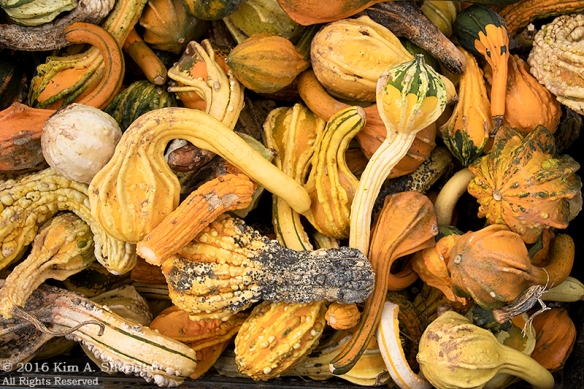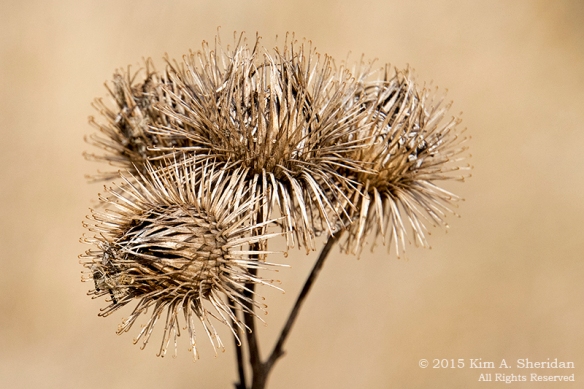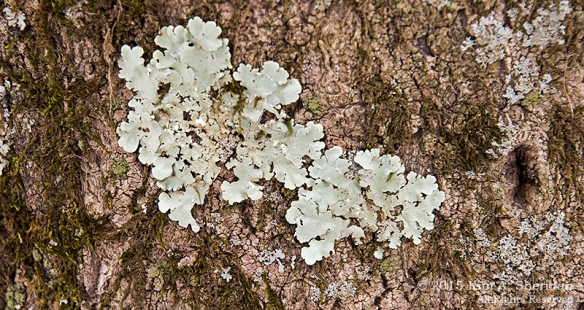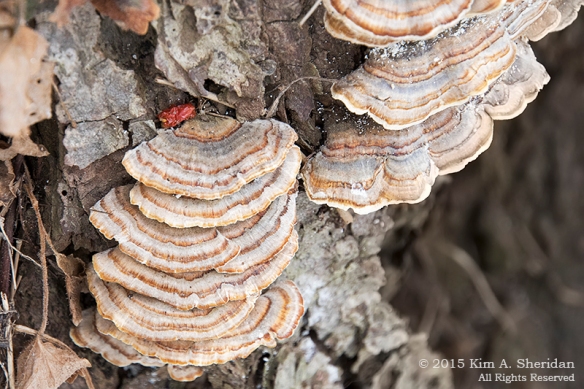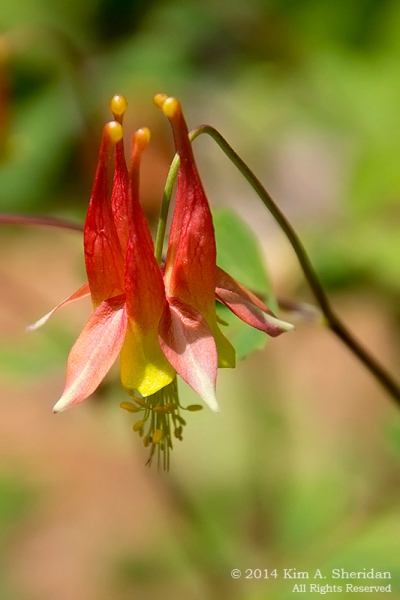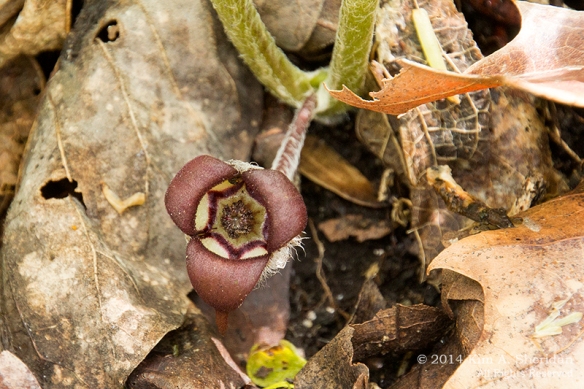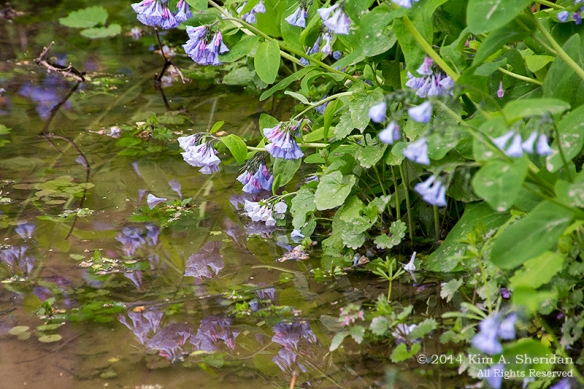 A melody drifts over the meadows, to the accompaniment of cicadas and crickets and birdsong. The tune is deep purple and golden, and it calls to the small creatures of the air with a silken voice: “Come to me! Feed on my rich nectar while you may!” The little aerialists are happy to oblige, raising their voices in sweet harmony to the music of the wildflowers until all the world is ablaze with the Song of September.
A melody drifts over the meadows, to the accompaniment of cicadas and crickets and birdsong. The tune is deep purple and golden, and it calls to the small creatures of the air with a silken voice: “Come to me! Feed on my rich nectar while you may!” The little aerialists are happy to oblige, raising their voices in sweet harmony to the music of the wildflowers until all the world is ablaze with the Song of September.
Category Archives: Flowers Trees & Shrubs
Sunflowers and Gourds
 FUN FACT: Sunflowers are composite flowers, where all is not what it seems. What look like petals are actually infertile ray flowers that attract vital pollinator species to the plant. The center of the sunflower is made up of hundreds of small flowers, each with five petals, a male stamen and a female stigma, where pollination takes place.
FUN FACT: Sunflowers are composite flowers, where all is not what it seems. What look like petals are actually infertile ray flowers that attract vital pollinator species to the plant. The center of the sunflower is made up of hundreds of small flowers, each with five petals, a male stamen and a female stigma, where pollination takes place.
FUN FACT: One of a group of true bugs known as assassin bugs, in the ambush bug family, Reduviidae. They eat soft-bodied insects, stink bugs and, as we witnessed, bees. A wheel bug injects enzyme-laced saliva into its prey, which paralyzes the victim and liquefies their internal parts, which the wheel bug proceeds to consume. Yuck! Adding to their allure, they inflict a painful bite on humans.
They have their good side, though; many of their preferred prey are pests, so they are welcomed in gardens and on farms. And they just look cool.
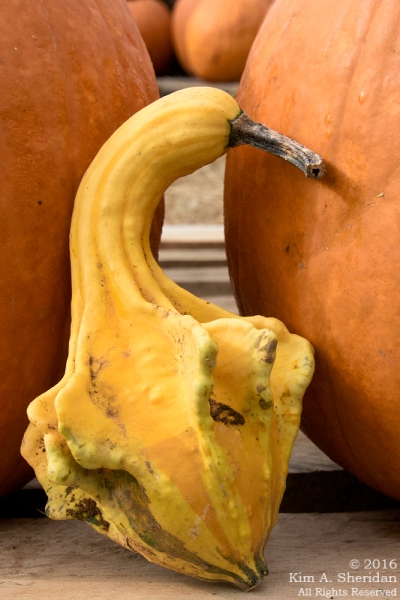 This gourd looked just like a goose to me. I took him home and cleaned him up.
This gourd looked just like a goose to me. I took him home and cleaned him up.
Behold – Gourdon Goose.
Sleeping Beauty
Weird and Wonderful Plants
 The Conservatory at Longwood Gardens is a welcome respite from the dark and dreary days of winter. Outside the landscaped grounds are cold, bleak and brown. Step indoors and we are welcomed with warmth and color.
The Conservatory at Longwood Gardens is a welcome respite from the dark and dreary days of winter. Outside the landscaped grounds are cold, bleak and brown. Step indoors and we are welcomed with warmth and color.
 Beautiful flowers are everywhere. Some dangle in delicate shades of blush…
Beautiful flowers are everywhere. Some dangle in delicate shades of blush…
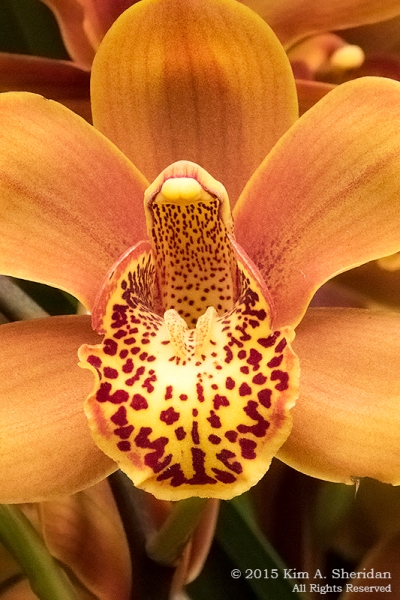 While others offer a brighter palette.
While others offer a brighter palette.
 Past the Main Conservatory and the Exhibition Hall, the Silver Garden and the Banana House, each step deeper into the labyrinth of corridors and rooms reveals ever more exotic plants. Bird of Paradise.
Past the Main Conservatory and the Exhibition Hall, the Silver Garden and the Banana House, each step deeper into the labyrinth of corridors and rooms reveals ever more exotic plants. Bird of Paradise.
 Round the bend and we are met with a shaft of sunlight illuminating some unusual leaves. Ram’s Horn Croton.
Round the bend and we are met with a shaft of sunlight illuminating some unusual leaves. Ram’s Horn Croton.
 Walking into the Fern Passage brings us among some truly weird and wonderful plants. Look up! See the intricate pattern made from the spore-dotted fronds of the Australian Tree fern that towers over your head.
Walking into the Fern Passage brings us among some truly weird and wonderful plants. Look up! See the intricate pattern made from the spore-dotted fronds of the Australian Tree fern that towers over your head.
 Turn another direction, and we find ourselves face to face with suspended carnivorous pitcher plants. Smaller ones share a planter with tiny Venus Flytraps.
Turn another direction, and we find ourselves face to face with suspended carnivorous pitcher plants. Smaller ones share a planter with tiny Venus Flytraps.
 Wait – our favorite plants seem to be missing. Where are the club mosses? This is Longwood Gardens; they simply have to be here.
Wait – our favorite plants seem to be missing. Where are the club mosses? This is Longwood Gardens; they simply have to be here.
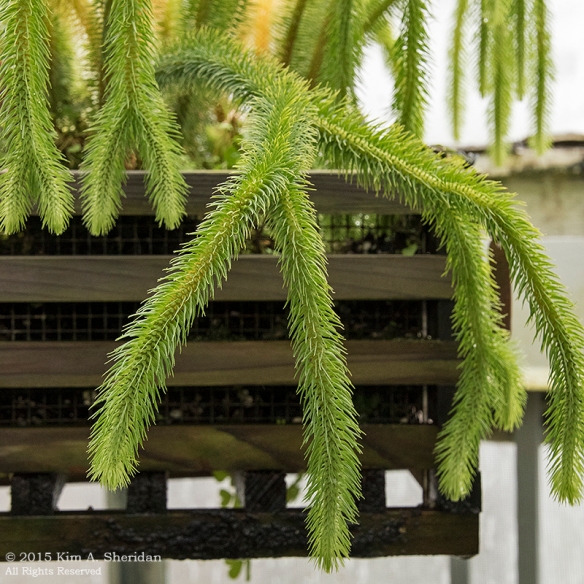 And they are. In fact, we were looking right at them. A helpful staff botanist is happy to show us what we missed.
And they are. In fact, we were looking right at them. A helpful staff botanist is happy to show us what we missed.
 Not mosses at all, club mosses are vascular plants. We are familiar with Lycopodium, which resembles a teeny tiny Christmas tree, but on this Christmas day, we are introduced to Huperzia, sometimes known as fir moss.
Not mosses at all, club mosses are vascular plants. We are familiar with Lycopodium, which resembles a teeny tiny Christmas tree, but on this Christmas day, we are introduced to Huperzia, sometimes known as fir moss.
 These particular Huperzia are called Tassel Ferns.
These particular Huperzia are called Tassel Ferns.
 Passing through the Cascade Garden, we find ourselves in the Rose Alley, which speaks to us of both spring gardens and tropical climes. Water droplets glisten on colorful hibiscus.
Passing through the Cascade Garden, we find ourselves in the Rose Alley, which speaks to us of both spring gardens and tropical climes. Water droplets glisten on colorful hibiscus.
 Outside it is cold and windy, but inside the Conservatory of Longwood Gardens winter dreams blossom into weird and wonderful life.
Outside it is cold and windy, but inside the Conservatory of Longwood Gardens winter dreams blossom into weird and wonderful life.
Mt. Cuba In Bloom
 The calendar is marching inexorably toward summer. Humidity is building, and the mercury is oozing toward 90 degrees. It seems like only yesterday that we were locked in snow and ice, and suddenly it’s hot. Did we even have a spring this year?
The calendar is marching inexorably toward summer. Humidity is building, and the mercury is oozing toward 90 degrees. It seems like only yesterday that we were locked in snow and ice, and suddenly it’s hot. Did we even have a spring this year?
 Yes, we did. Like her sister Autumn, Lady Spring is an elusive and ephemeral tease. This year, perhaps pouting at the persistence of the Winter Queen, Spring’s arrival was late, and her stay short. But she did grace us with her presence. I have the evidence!
Yes, we did. Like her sister Autumn, Lady Spring is an elusive and ephemeral tease. This year, perhaps pouting at the persistence of the Winter Queen, Spring’s arrival was late, and her stay short. But she did grace us with her presence. I have the evidence!
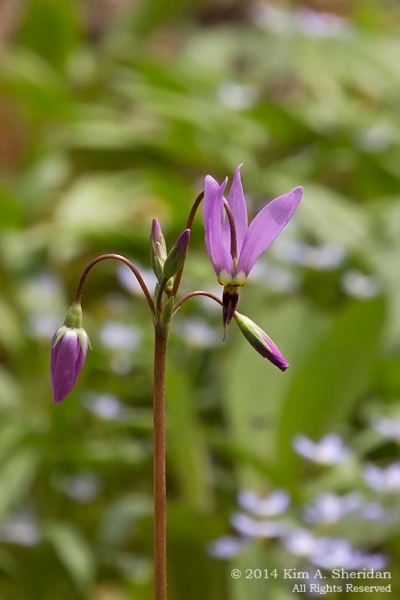 All of these photos were taken at Mt. Cuba Center in Delaware. Mt. Cuba is a botanical garden with a commitment to using and promoting native plants in its 50 acre cultivated gardens and 500 acre natural areas.
All of these photos were taken at Mt. Cuba Center in Delaware. Mt. Cuba is a botanical garden with a commitment to using and promoting native plants in its 50 acre cultivated gardens and 500 acre natural areas.
The center offers many classes on horticulture and conservation, and maintains a Trial Garden where various native plants are studied.
 The pathway leads through a variety of habitats, including woods, meadows and ponds.
The pathway leads through a variety of habitats, including woods, meadows and ponds.
 The stars of the show in spring are the Trilliums. They even get their own garden!
The stars of the show in spring are the Trilliums. They even get their own garden!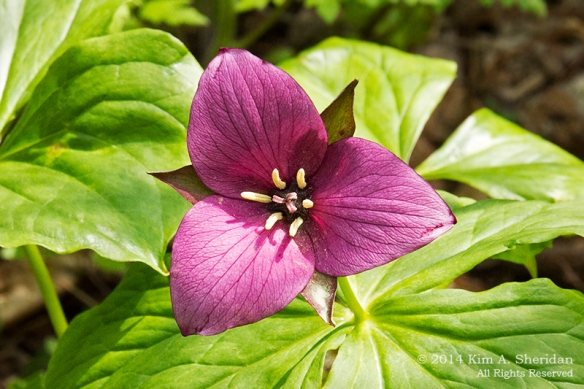

 Some Trilliums wear camo…
Some Trilliums wear camo…
 Or come in double-flowered forms.
Or come in double-flowered forms.
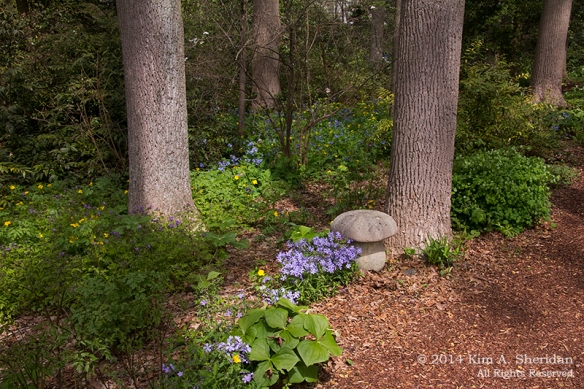 A shady spot for one of Her Ladyship’s sprites to sit and enjoy her lunch.
A shady spot for one of Her Ladyship’s sprites to sit and enjoy her lunch.
These neat flowers were at both Shenk’s Ferry and Mt. Cuba. They gave me fits trying to get a good photo.
 Now the Summer Queen is knocking at the door. Lady Spring kept us in suspense this year, and her appearance was brief, but oh, was it worth the wait!
Now the Summer Queen is knocking at the door. Lady Spring kept us in suspense this year, and her appearance was brief, but oh, was it worth the wait!
Shenk’s Ferry Wildflower Preserve
 Can you imagine life as a spring ephemeral wildflower? You’ve lain dormant for months, through the summer heat and the cold days of winter. As the weather begins to warm, you awaken. You have a few short weeks to do all your work for the year. Leaf out, feed, bloom, reproduce and set seed; all need to be accomplished before the tree canopy above you leafs out and blocks precious sunlight, and the air turns hot. Better get busy! Virginia Bluebell, above.
Can you imagine life as a spring ephemeral wildflower? You’ve lain dormant for months, through the summer heat and the cold days of winter. As the weather begins to warm, you awaken. You have a few short weeks to do all your work for the year. Leaf out, feed, bloom, reproduce and set seed; all need to be accomplished before the tree canopy above you leafs out and blocks precious sunlight, and the air turns hot. Better get busy! Virginia Bluebell, above.
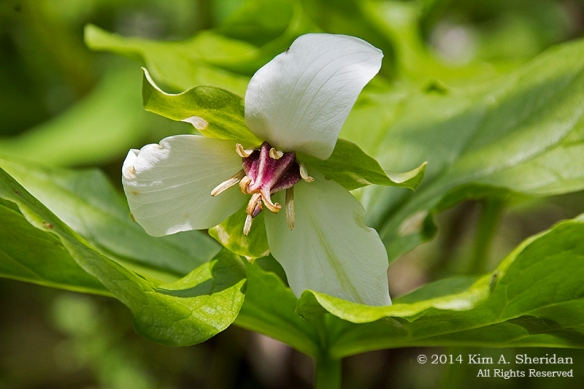 Shenk’s Ferry Wildflower Preserve, along the Susquehanna River in Lancaster County, is well-known for its variety of wildflowers. Over 70 different species bloom in the spring, with another 60 peaking during the summer. Trillium.
Shenk’s Ferry Wildflower Preserve, along the Susquehanna River in Lancaster County, is well-known for its variety of wildflowers. Over 70 different species bloom in the spring, with another 60 peaking during the summer. Trillium.
 Don’t expect a cultivated garden if you visit, though. Oh no! This is a wild woodland glen whose main trail traces the path of creek valley. Wildflowers, many tiny, are scattered along the forest floor under the trees, tucked away in the lush understory. Finding these little beauties is worth the effort though. Spring Beauty.
Don’t expect a cultivated garden if you visit, though. Oh no! This is a wild woodland glen whose main trail traces the path of creek valley. Wildflowers, many tiny, are scattered along the forest floor under the trees, tucked away in the lush understory. Finding these little beauties is worth the effort though. Spring Beauty.
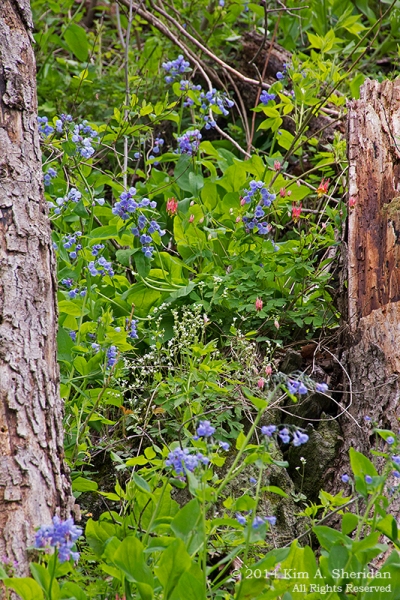 I thought learning to identify different bird species was tough, but it’s nothing compared to plants. I’ve only been studying identification for two years or so, and I’m trying to learn birds, plants, trees, dragonflies, butterflies and lots of other critters – all at the same time.
I thought learning to identify different bird species was tough, but it’s nothing compared to plants. I’ve only been studying identification for two years or so, and I’m trying to learn birds, plants, trees, dragonflies, butterflies and lots of other critters – all at the same time.
I’ve tried to put common names to as many of these flowers as I can. If I’ve identified something incorrectly, or not at all, and you know its proper name, PLEASE leave a comment!
Virginia Bluebells and Wild Columbine.
 In most cases I’ve only gotten as far as a family or genus name, not the individual species. For instance, this is a Violet. Which one, I have no idea.
In most cases I’ve only gotten as far as a family or genus name, not the individual species. For instance, this is a Violet. Which one, I have no idea.
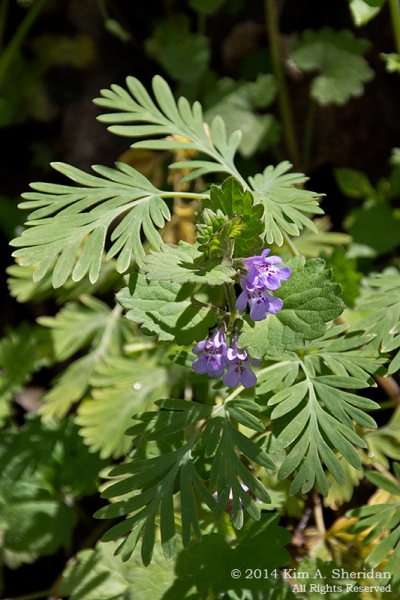 I think this might be another Violet.
I think this might be another Violet.
Or something else entirely.
In identifying plants, the flower is the first classification to make (which can be a problem if the plant isn’t in bloom). The next step is to classify the plant itself (wildflower, shrub, vine) and then look at the leaves.
Don’t let the leaves in this photo fool you; they’re from two different plants.
Here’s Squirrel Corn.
At first I had it labeled as Dutchman’s Breeches, then I looked at Wild Bleeding Heart.
All three plants are in the Dicentra genus, so they’re cousins, and near look-alikes.
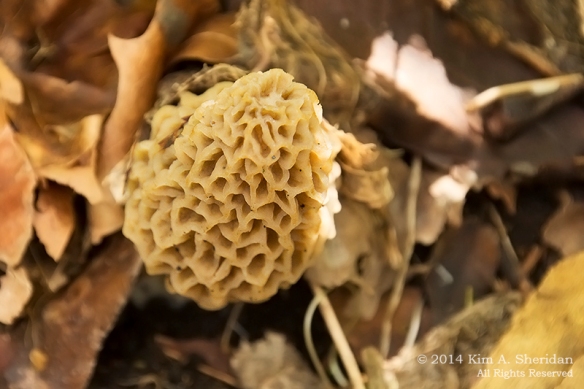 This isn’t a wildflower, but a mushroom known as a morel. It will be as short-lived as the spring ephemerals.
This isn’t a wildflower, but a mushroom known as a morel. It will be as short-lived as the spring ephemerals.
 Does anyone know this lovely lady’s name?
Does anyone know this lovely lady’s name?
Once the heat sets in, and the trees cast permanent shade, your time to get productive work done has passed. Is this the end for you? Not at all. Though your flowers and perhaps your leaves will wither, you have firm roots in the soil. Like all ephemeral wildflowers, you will go dormant, sleeping away the passing seasons until spring arrives and you blossom anew.
Unsweetened Iced Tree
 The wonderful thing about weather is that it’s never the same from day to day. Variety is the spice of life, right? Well, this was one variety we could have done without: ice.
The wonderful thing about weather is that it’s never the same from day to day. Variety is the spice of life, right? Well, this was one variety we could have done without: ice.
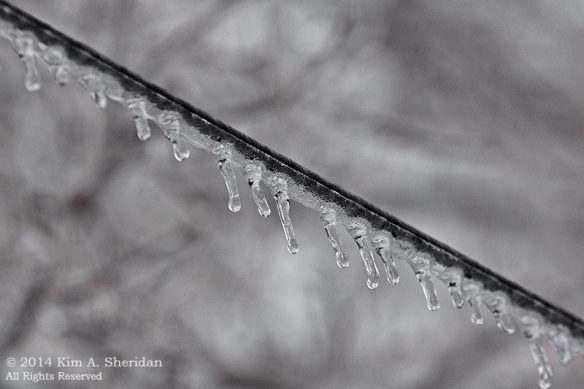 Last week we had a significant ice storm. Ice coated the branches and twigs of the trees, and many of the older, larger trees lost limbs or came down completely. Downed wires led to over 700,000 power outages in my area of Pennsylvania, and many homes and businesses were without power for days. It was just hours for me, and I’m counting my blessings for that.
Last week we had a significant ice storm. Ice coated the branches and twigs of the trees, and many of the older, larger trees lost limbs or came down completely. Downed wires led to over 700,000 power outages in my area of Pennsylvania, and many homes and businesses were without power for days. It was just hours for me, and I’m counting my blessings for that.
 After the rain stopped, I tried to capture the beauty in the beast before the ice melted away.
After the rain stopped, I tried to capture the beauty in the beast before the ice melted away.
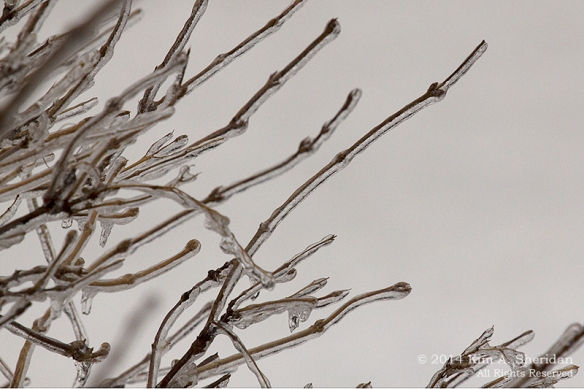
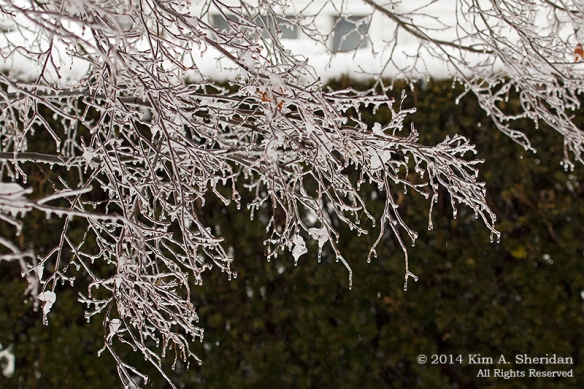



 A friend said that the patterns in the ice remind her of crackled glass, and I realized that is why I have been so fascinated with the ice this winter. I love glass in all its forms. Really, anything transparent or reflective. I must have been a raven in a former life – I love shiny things. (The image above is worth clicking to see the intricate ice patterns.)
A friend said that the patterns in the ice remind her of crackled glass, and I realized that is why I have been so fascinated with the ice this winter. I love glass in all its forms. Really, anything transparent or reflective. I must have been a raven in a former life – I love shiny things. (The image above is worth clicking to see the intricate ice patterns.)
 This has been the winter of our discontent. As I write this, a Nor’Easter has once again buried us in snow, and wind and sleet assault my windows.
This has been the winter of our discontent. As I write this, a Nor’Easter has once again buried us in snow, and wind and sleet assault my windows.
Yet, this too shall pass. As the ice of last week melted away, this winter will melt into our memories. Underneath the snow my crocuses sleep, well-watered and warm, waiting for the Spring yet to be.
Independence Day II: A Morris Mosaic
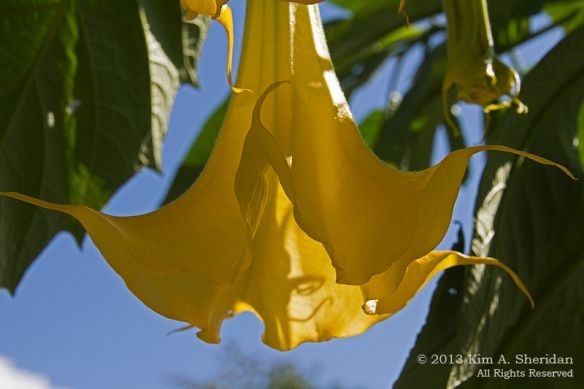 After our ramble through the Wissahickon, and lunch in an air-conditioned restaurant, my friends and I were refreshed enough to take on the Morris Arboretum in Chestnut Hill.
After our ramble through the Wissahickon, and lunch in an air-conditioned restaurant, my friends and I were refreshed enough to take on the Morris Arboretum in Chestnut Hill.
Originally a summer estate, it became part of the University of Pennsylvania in 1932.Besides a wealth of trees, plants and flowers, every summer the arboretum hosts a wonderful garden railway. In addition, this year it is also hosting the BIG BUGS! exhibit. 
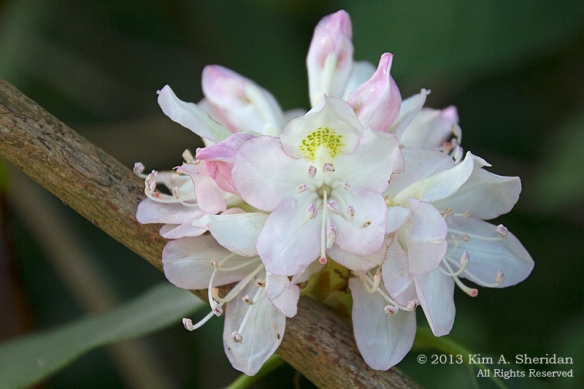

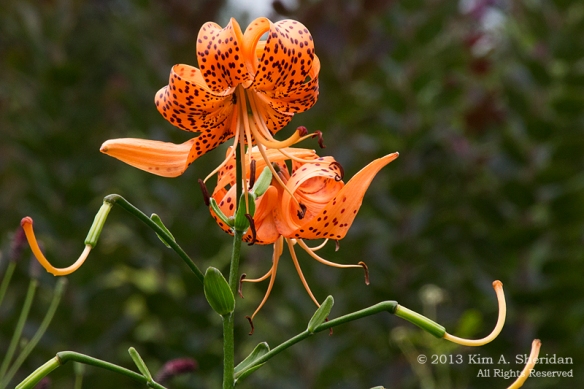


Coming up: Natural Abstraction
Independence Day I: Wissahickon Wanderings
or
What I Did On The Fourth of July
 This year ranked as one of my more unusual Independence Day holidays. Several Refuge friends and I went exploring in Fairmount Park and then the Morris Arboretum.
This year ranked as one of my more unusual Independence Day holidays. Several Refuge friends and I went exploring in Fairmount Park and then the Morris Arboretum.
Fairmount Park in Philadelphia is the one of the largest urban park systems in the US, and spreads throughout much of the city. The 1800 acre portion along the Wissahickon Creek, known as the Wissahickon Valley, is actually a gorge, with the wooded slopes rising nearly 200 feet above the Creek. It’s as close to wilderness as one could be in a big city.
Our primary goal here was to see the Thomas Mill Road Covered Bridge. To reach it we took a long, easy walk down Forbidden Drive.
 Kids swimming in the Creek. It was hot and humid, and later in the day I really wanted to join them.
Kids swimming in the Creek. It was hot and humid, and later in the day I really wanted to join them.
 One of the remnant dams along the Creek. The dams supplied water to run the waterwheels of the lumber, paper, and grist mills that once populated the Valley.
One of the remnant dams along the Creek. The dams supplied water to run the waterwheels of the lumber, paper, and grist mills that once populated the Valley.
 I spent some time trying to persuade at least one Eastern Tiger Swallowtail butterfly to be still long enough for a picture. Didn’t have much luck.
I spent some time trying to persuade at least one Eastern Tiger Swallowtail butterfly to be still long enough for a picture. Didn’t have much luck.
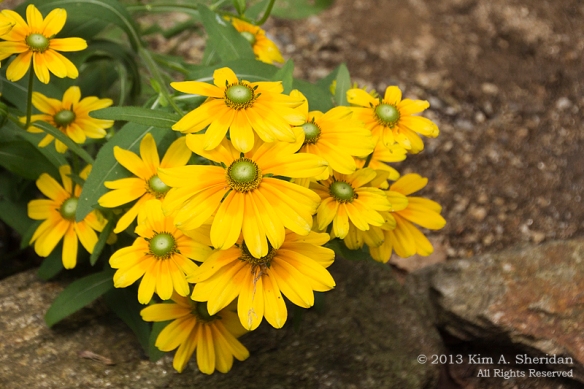 More trail art. Courtesy of Mother Nature this time.
More trail art. Courtesy of Mother Nature this time.
When you walk anywhere with the botanically-inclined, you can expect frequent discussions on the identity of this or that plant. Here’s Robb (in orange) and Jeff arguing, ahem, discussing the identification of a tree.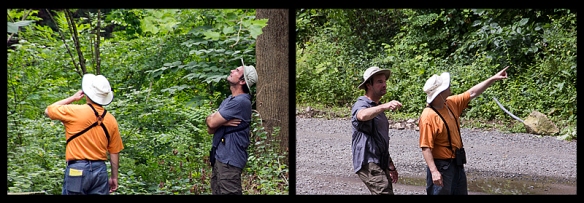 “This tree over here?” “No! THAT tree over THERE!”
“This tree over here?” “No! THAT tree over THERE!”
 Really cool old building, originally part of a nearby mill, but rebuilt by the Works Projects Administration (WPA) in 1938. They were used to shelter the Fairmount Park Guards who once patrolled the park.
Really cool old building, originally part of a nearby mill, but rebuilt by the Works Projects Administration (WPA) in 1938. They were used to shelter the Fairmount Park Guards who once patrolled the park.

 Ahhh! At last! The Thomas Mill Road Covered Bridge.
Ahhh! At last! The Thomas Mill Road Covered Bridge.
It was built in 1737, and restored by WPA in 1938. It’s the last covered bridge in the Valley, and the only covered bridge in a major U.S. city.
There’s something picturesque about a covered bridge. I think it’s the play of red against the green foliage.
Aren’t all covered bridges red?
Here’s Don, looking every bit the bold explorer, in front of the bridge.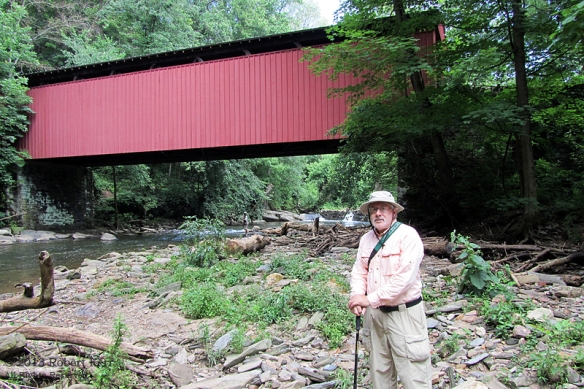
We crossed over the Creek here, and came back to Valley Green via the trail. A totally different walk. Where the Forbidden Drive was wide, the trail was narrow; where it was flat, the trail climbed sharply up and down; where the Drive was crowded with bikers and runners and horses, the trail was – well, not empty, but certainly less crowded.
Our goal along the trail side of the Wissahickon was “The Indian”. The Valley was once the home of the Lenni-Lenape people. In 1902, after they were long gone, a 15 foot high sculpture was erected in their honor. It depicts a Lenni-Lenape warrior, kneeling and shading his brow as he watches his tribe depart from the region. Of course, the artist couldn’t be bothered to differentiate among the traditions of the various Native American nations that lived here. Which is why an Eastern Woodland Indian is wearing a Western Plains Indian headdress.
On the Forbidden Drive side we’d come upon a sign marking the Indian statue, placed high up on the far bank of the creek. The only trouble was, we couldn’t see the statue for the trees.
With the help of some other trekkers, we found the pathway to the Indian.This was a short but tough trail that went straight up; you get some idea of the steepness of the Gorge from this set of stairs. We found ourselves below the base of the statue. This was a great view, and I wanted a great shot, but as you can see but I blew the focus. Oh, well, I will just have to go back.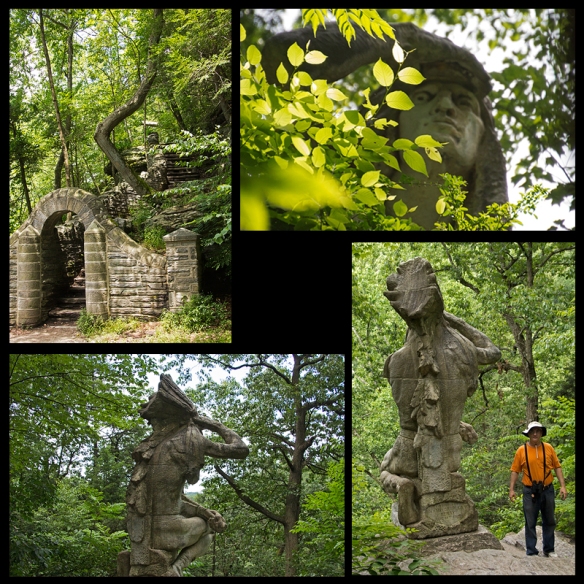 Up at the top we got a perspective I am quite familiar with from my wildlife photography – the rear end. Here you can see that the statue is slightly more than two Robbs high. And since the Indian’s kneeling – well, that’s one big Indian.
Up at the top we got a perspective I am quite familiar with from my wildlife photography – the rear end. Here you can see that the statue is slightly more than two Robbs high. And since the Indian’s kneeling – well, that’s one big Indian.
Leaving our friend, we discovered a much easier path back down to where the main trail awaited. Wish we’d known that before! From here back to the car, the trail got tougher, as we needed to clamber over roots, tree trunks, rocks and even small streams. A couple of times I found it easier to slide on my bum. Eventually we made it back to Valley Green, where another adventure awaited – finding a restaurant that was open on the Fourth of July.
 My dad grew up very close to the Wissahickon Valley in the 1930s and ’40s, and spent a lot of time there. And told me a lot of tall tales from his boyhood. This first visit just made me more determined to see more of the area he knew so well.
My dad grew up very close to the Wissahickon Valley in the 1930s and ’40s, and spent a lot of time there. And told me a lot of tall tales from his boyhood. This first visit just made me more determined to see more of the area he knew so well.
Coming up: Independence Day II: A Morris Mosaic
Photo of Don courtesy of Robb Kerr
Historical information courtesy of the Friends of the Wissahickon http://www.fow.org/about-park
Pine Barrens Ramble: Into The Woods
 So what is the Pine Barrens anyway, and why is it barren?
So what is the Pine Barrens anyway, and why is it barren?
 The Pine Barrens is a vast area in the southern New Jersey coastal plain, sandy and heavily forested. It was called “barren” by early European settlers, who found that the crops they planted wouldn’t grow there because of the acidic, sandy soil. The area is by no means an ecological desert. Oak and Pitch pine thrives there, including the rare pygmy Pitch Pine, and there are orchids, carnivorous plants and numerous other plant species. Amongst the forest are boggy wetlands, and tea-colored rivers. Here too are blueberry and cranberry growers, ghost towns, and preserved historic villages.
The Pine Barrens is a vast area in the southern New Jersey coastal plain, sandy and heavily forested. It was called “barren” by early European settlers, who found that the crops they planted wouldn’t grow there because of the acidic, sandy soil. The area is by no means an ecological desert. Oak and Pitch pine thrives there, including the rare pygmy Pitch Pine, and there are orchids, carnivorous plants and numerous other plant species. Amongst the forest are boggy wetlands, and tea-colored rivers. Here too are blueberry and cranberry growers, ghost towns, and preserved historic villages.
Like Batsto, which I visited with friends not long ago. Our intention had been to take a guided nature walk led by a friend of Don’s, but we arrived to find it had been cancelled. So we went exploring on our own. These are the ruins of the paper mill at Harrisville, one of many ghost towns dotting the Pine Barrens. Most of it is enclosed with chain link fence. While Ned and I were figuring out how to shoot over the fence, Don and Robb found another vantage point. (Wink, wink) There was just one wall left standing – but it was a really cool wall!
These are the ruins of the paper mill at Harrisville, one of many ghost towns dotting the Pine Barrens. Most of it is enclosed with chain link fence. While Ned and I were figuring out how to shoot over the fence, Don and Robb found another vantage point. (Wink, wink) There was just one wall left standing – but it was a really cool wall! We then decided to take the trail to Martha’s Furnace ourselves. Why, is anyone’s guess, as you’ll see in a minute. The trail was my first taste of hiking in the Pine Barrens. The sand road wound through a forest of predominantly pitch pine. The soft white sand is known as “sugar sand” for its consistency. I could hear lots of birds, but didn’t have much luck seeing them in the dense trees. And no bears!
We then decided to take the trail to Martha’s Furnace ourselves. Why, is anyone’s guess, as you’ll see in a minute. The trail was my first taste of hiking in the Pine Barrens. The sand road wound through a forest of predominantly pitch pine. The soft white sand is known as “sugar sand” for its consistency. I could hear lots of birds, but didn’t have much luck seeing them in the dense trees. And no bears!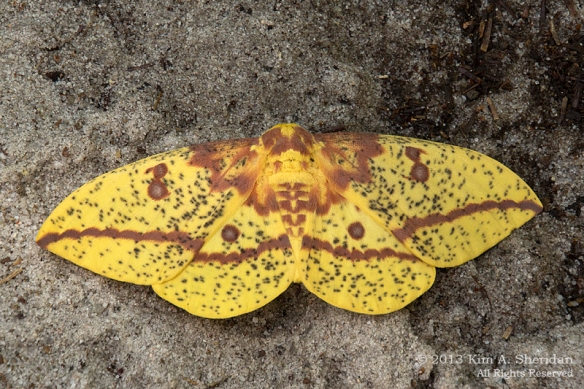 We did find an Imperial Moth (above) that was so still, the boys mistook it for a leaf. Then they thought it was dead. (It wasn’t.) We also spent some time with a Fowler’s Toad, (below) wearing Toad Army camouflage. I was the one to find both of these creatures; maybe my wildlife spotting skills are improving.
We did find an Imperial Moth (above) that was so still, the boys mistook it for a leaf. Then they thought it was dead. (It wasn’t.) We also spent some time with a Fowler’s Toad, (below) wearing Toad Army camouflage. I was the one to find both of these creatures; maybe my wildlife spotting skills are improving.
 At a couple of points the road ran down to the Oswego River. Definitely my favorite part of the trip. The dark brown water gets its color from tannins from the cedar tress combining with iron in the ground. Looks like you are canoeing in a tea cup!
At a couple of points the road ran down to the Oswego River. Definitely my favorite part of the trip. The dark brown water gets its color from tannins from the cedar tress combining with iron in the ground. Looks like you are canoeing in a tea cup!
Martha is another ghost town, this time centering on a bog-iron furnace. Years ago the state surveyed the ruins, and then buried it and fenced it in. So, of course, when we got there, there was nothing to see but a mound of dirt covered with weedy shrubs and trees inside a fence.
Actually, if the scheduled walk had happened, we’d have had a knowledgeable naturalist to show us numerous interesting plants and critters. It was never really about Martha itself.
 Here’s Don trying to figure out why we came. Well, the walk was nice.
Here’s Don trying to figure out why we came. Well, the walk was nice.
Even on our own, my first taste of the Pine Barrens whetted my appetite for more. Conservation Piece: In 1978, the Pine Barrens became the country’s first National Reserve, when 1,100,000 acres was designated the New Jersey Pinelands National Preserve. The area comprises most of seven counties, three state forests, and two National Wild and Scenic Rivers. The Reserve was created to protect not only the natural beauty of the area, but its history, folklore, and unique culture. The place continues to be largely rural, and may be the closest New Jersey gets to “wilderness”.
Conservation Piece: In 1978, the Pine Barrens became the country’s first National Reserve, when 1,100,000 acres was designated the New Jersey Pinelands National Preserve. The area comprises most of seven counties, three state forests, and two National Wild and Scenic Rivers. The Reserve was created to protect not only the natural beauty of the area, but its history, folklore, and unique culture. The place continues to be largely rural, and may be the closest New Jersey gets to “wilderness”.
Coming Thursday: The Stars and Stripes Forever












